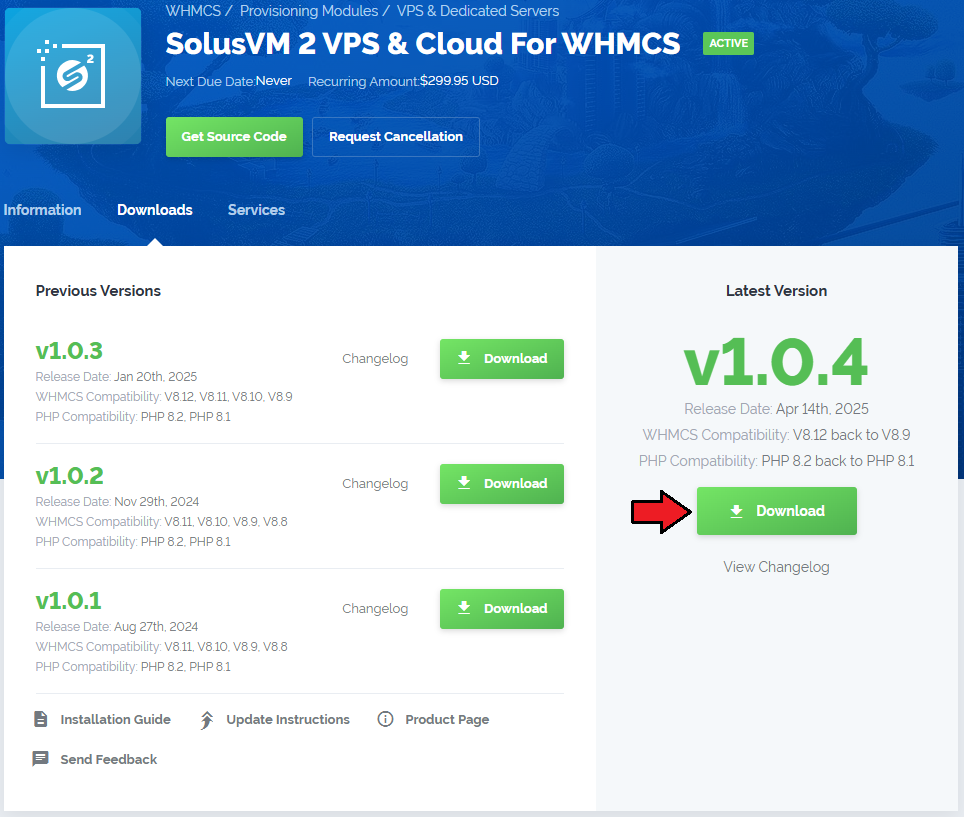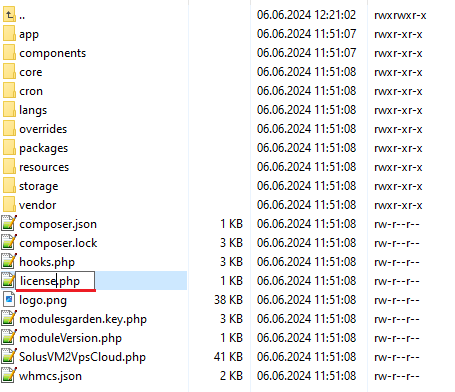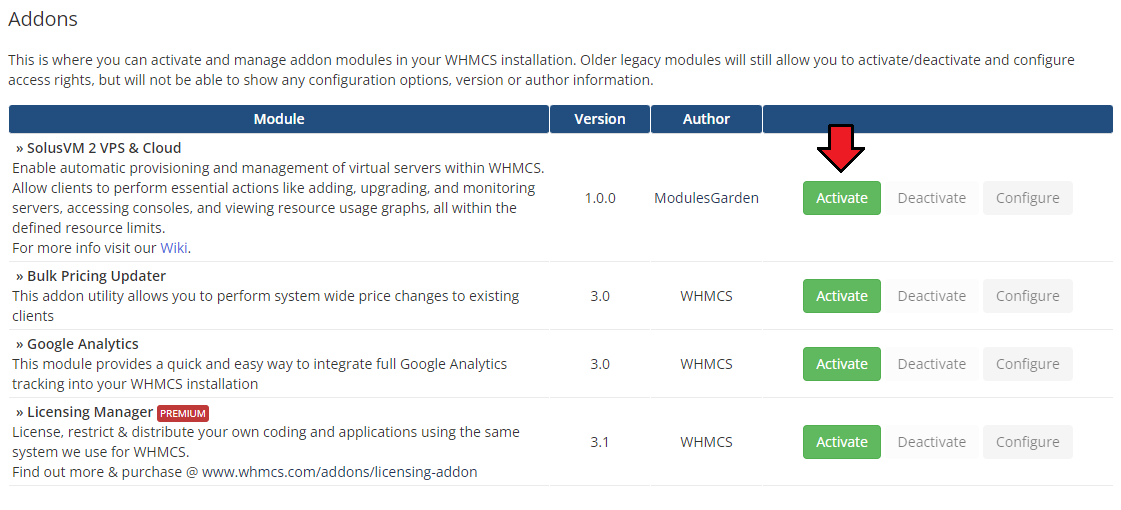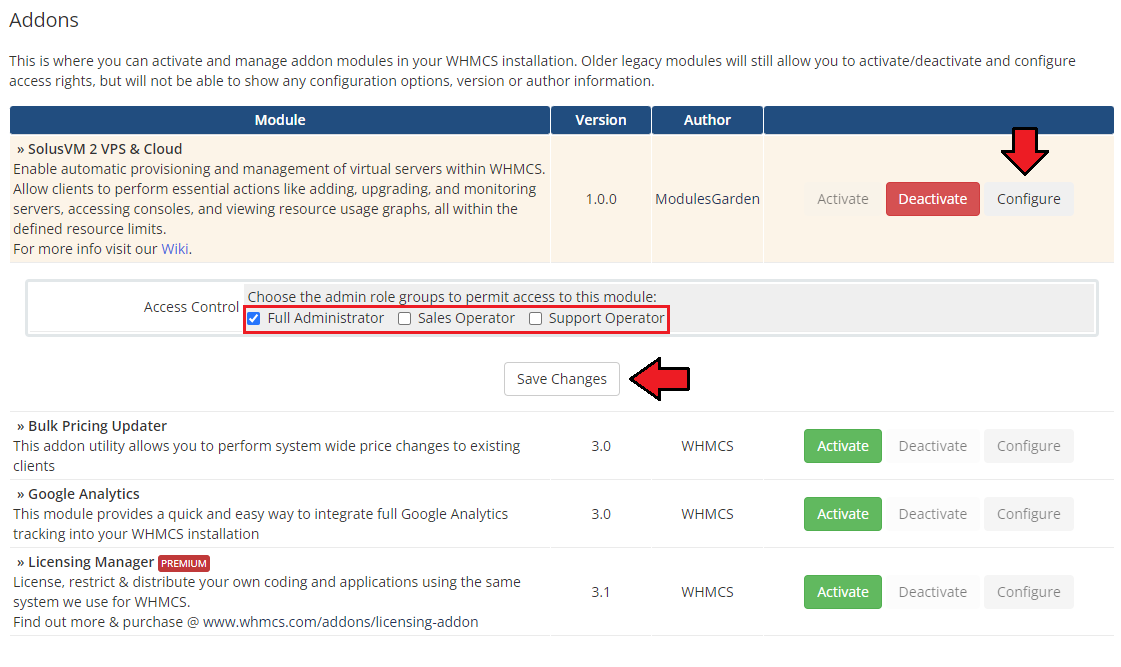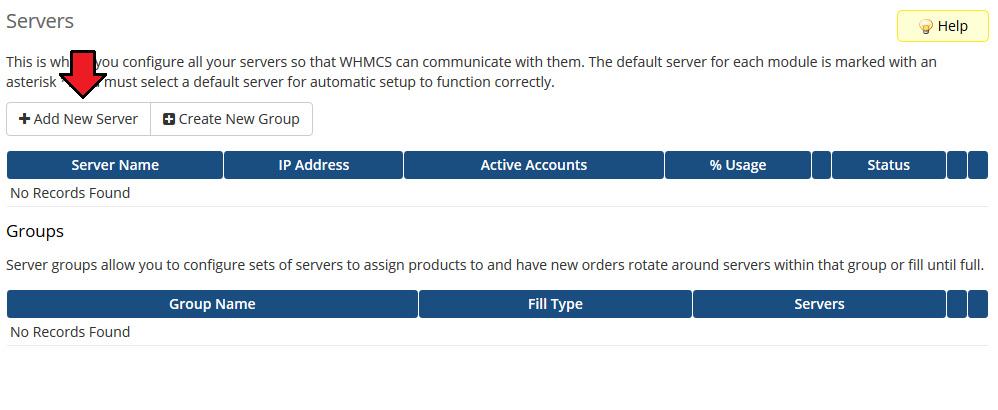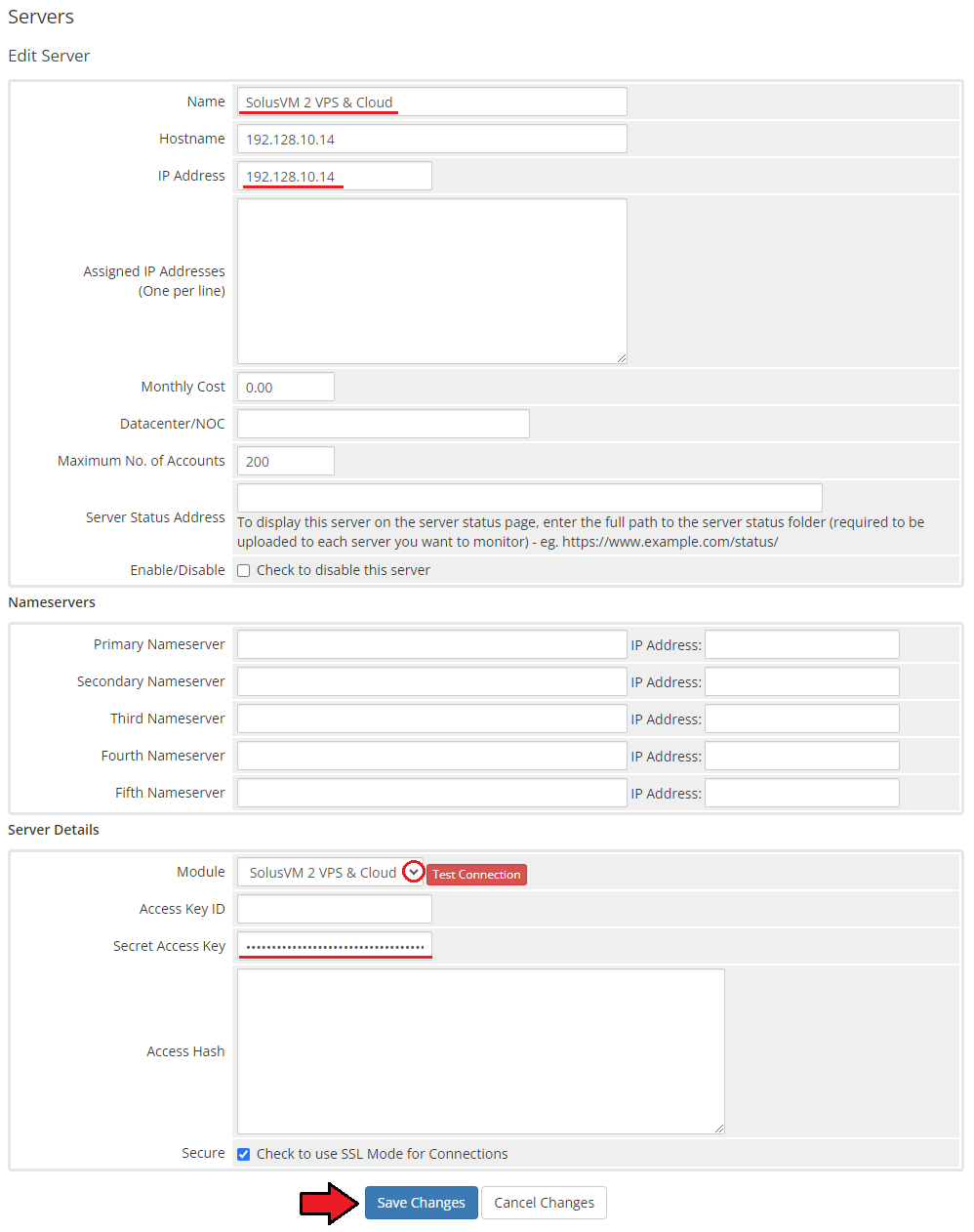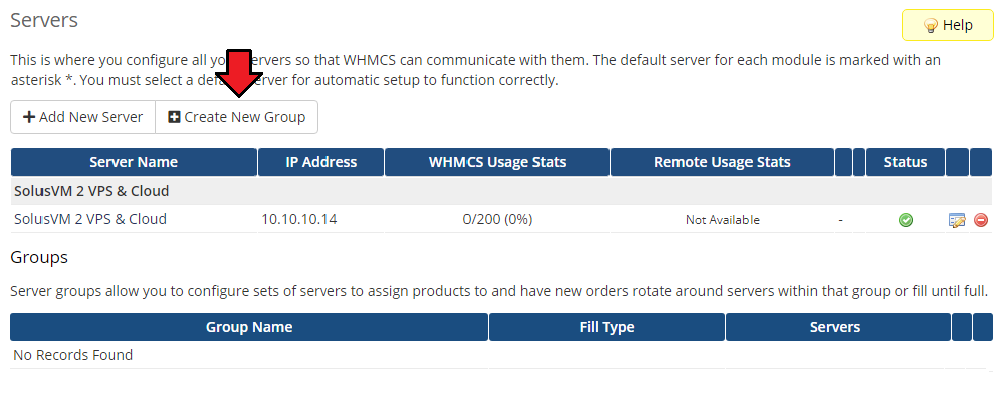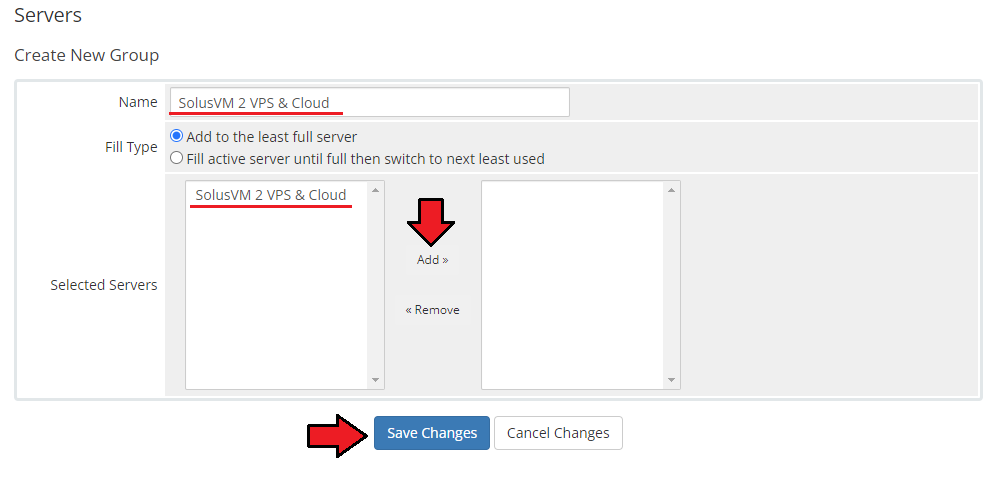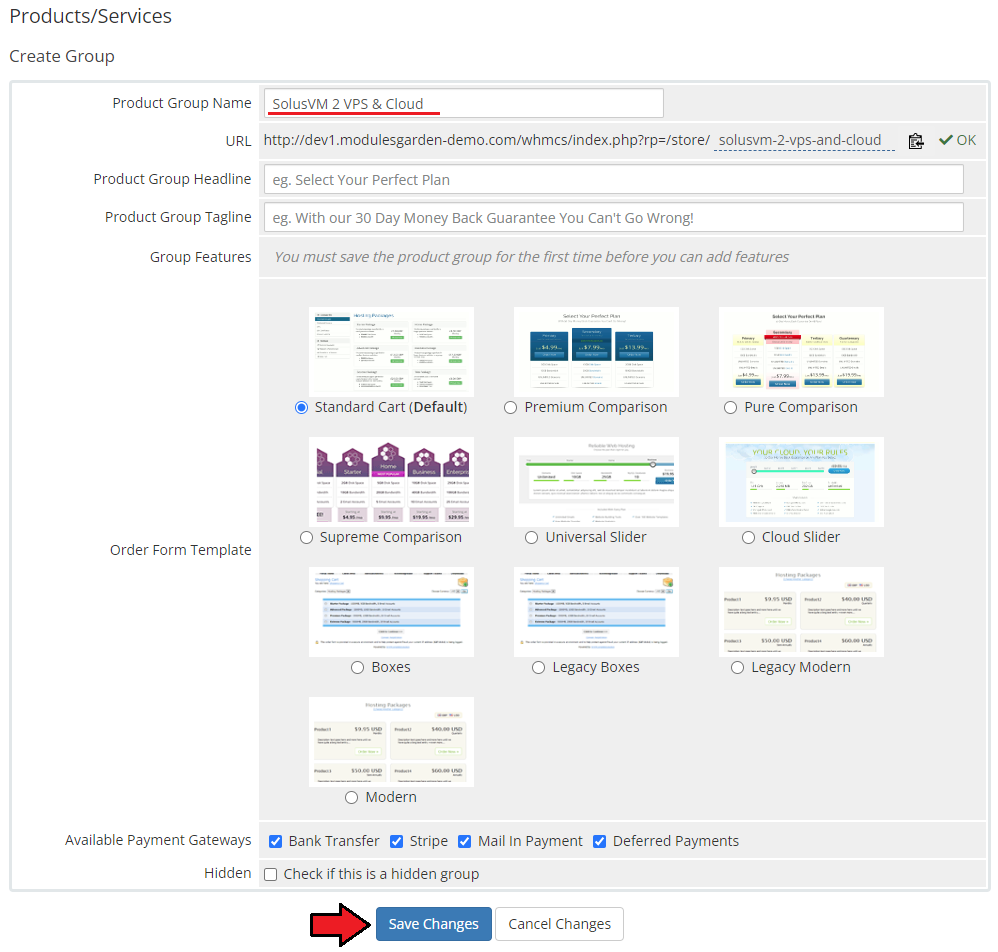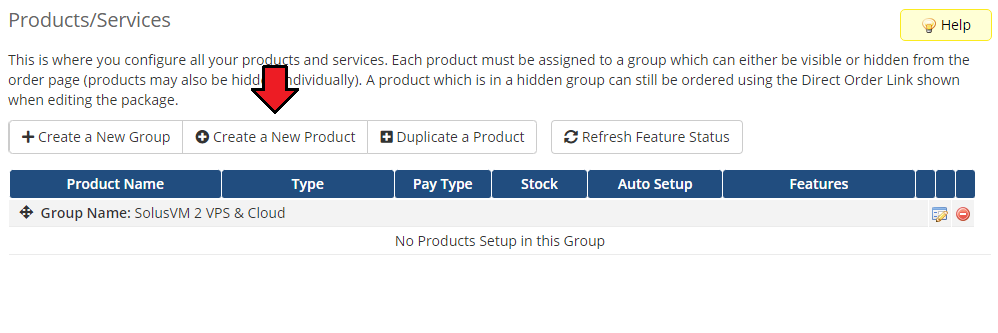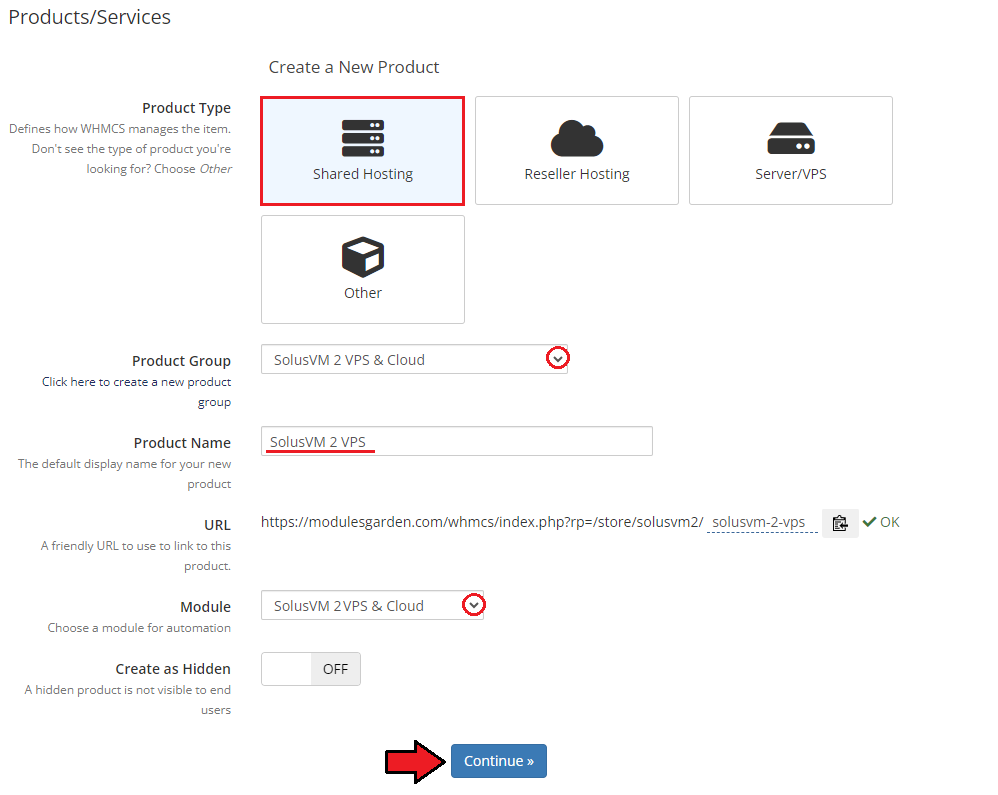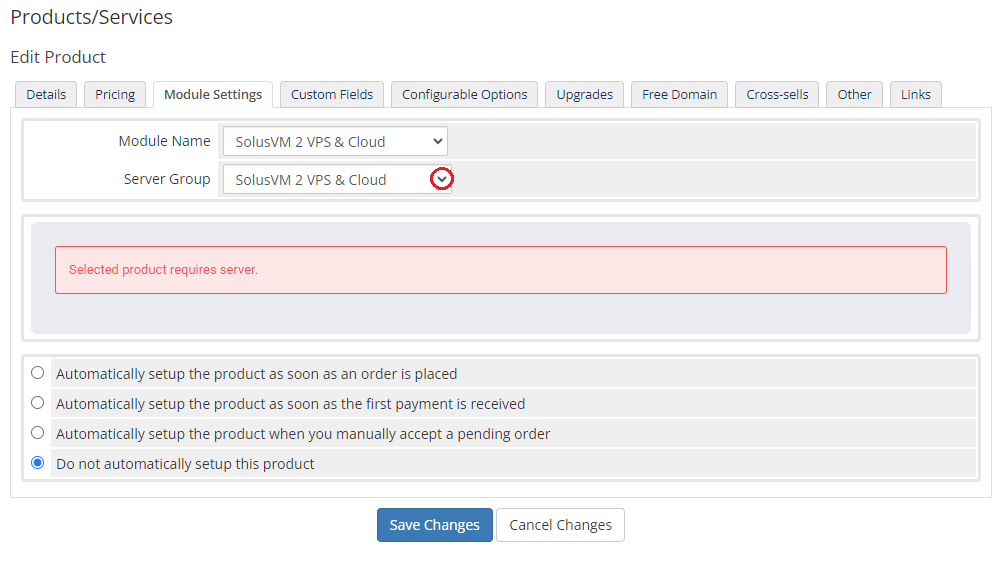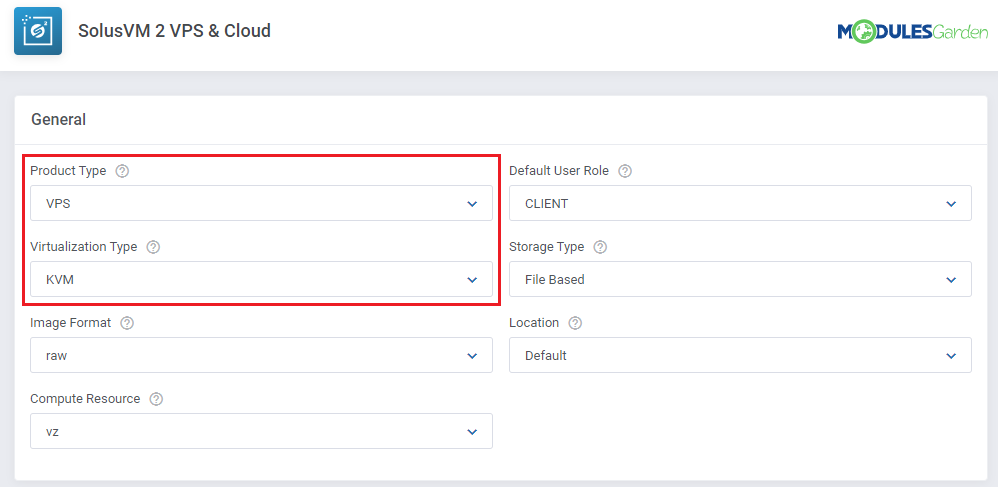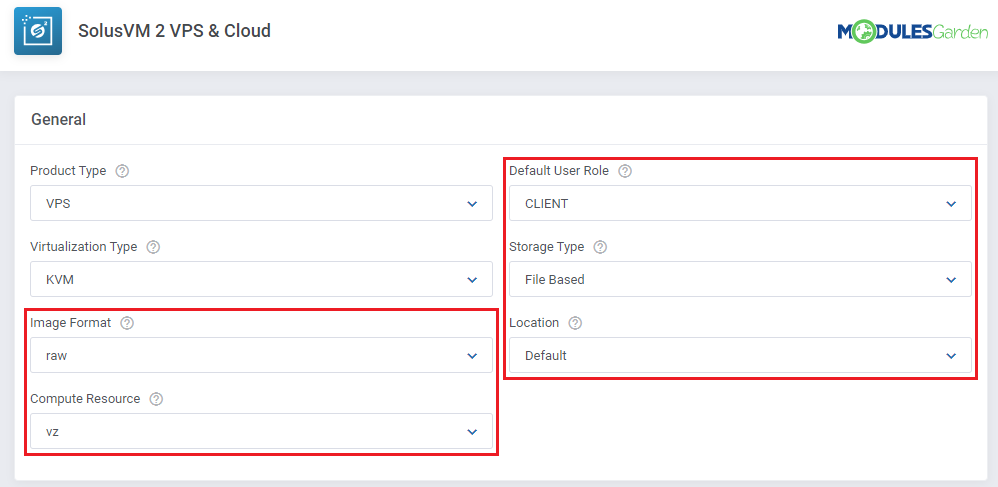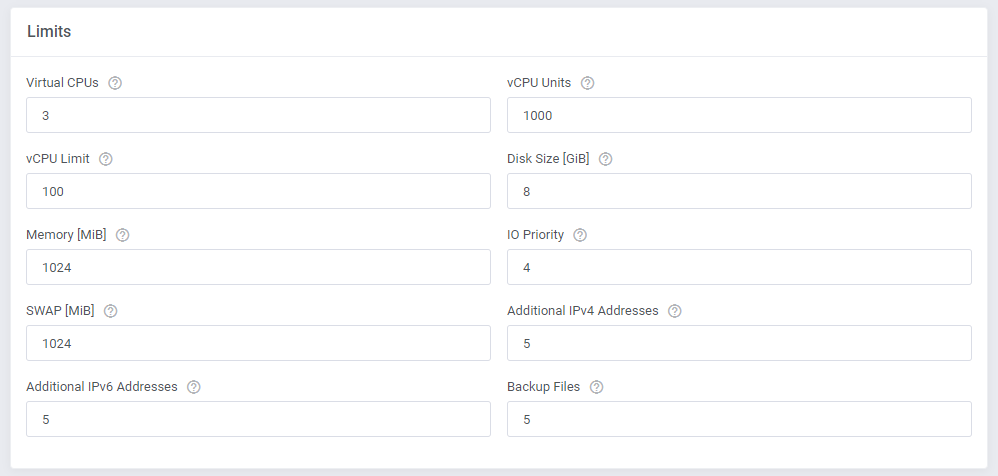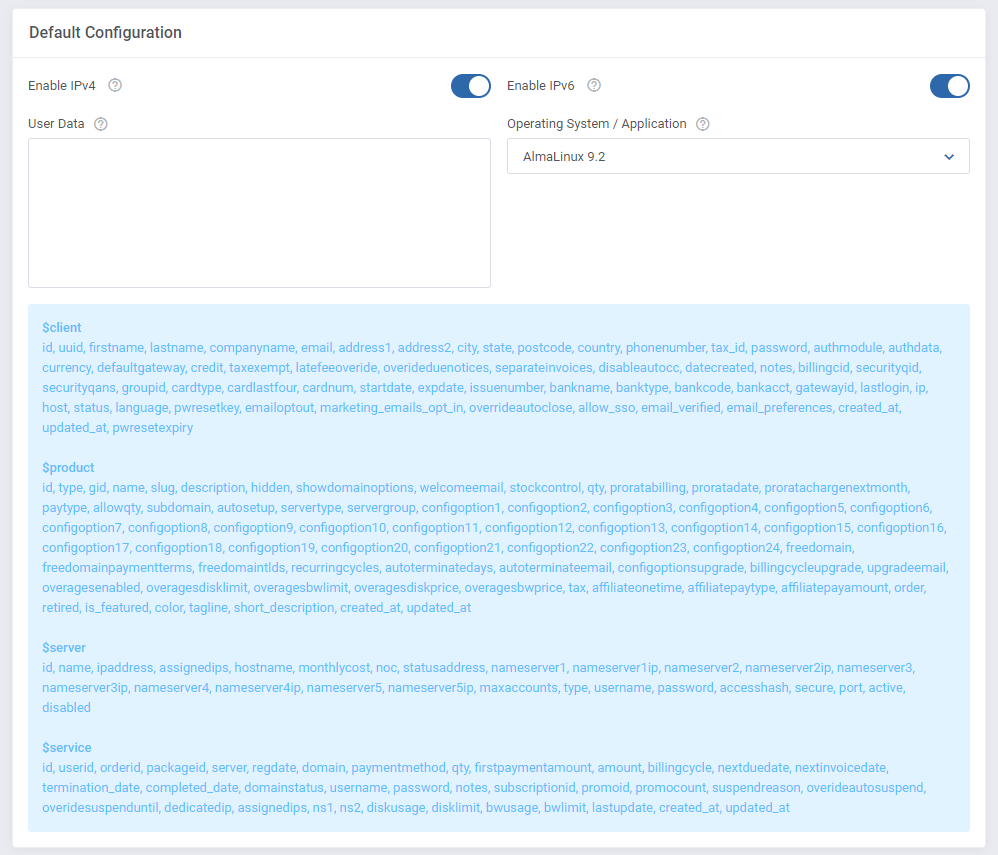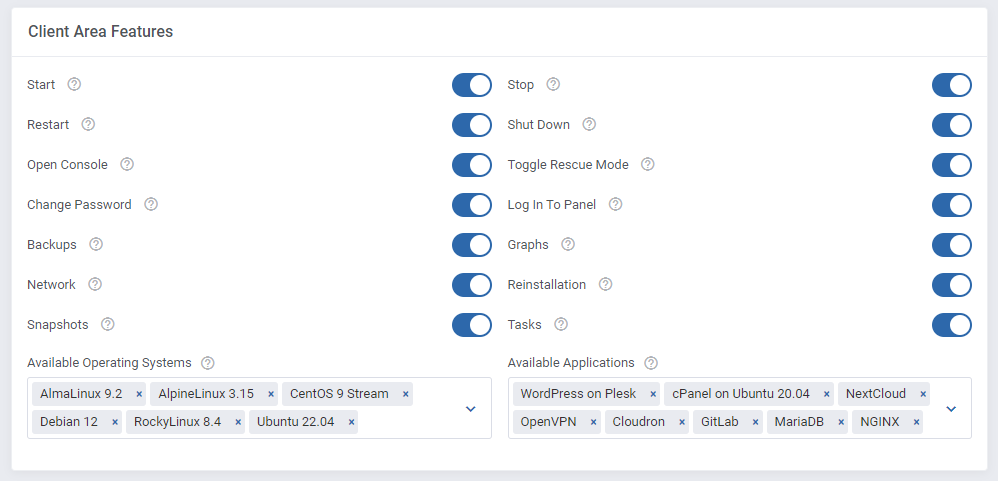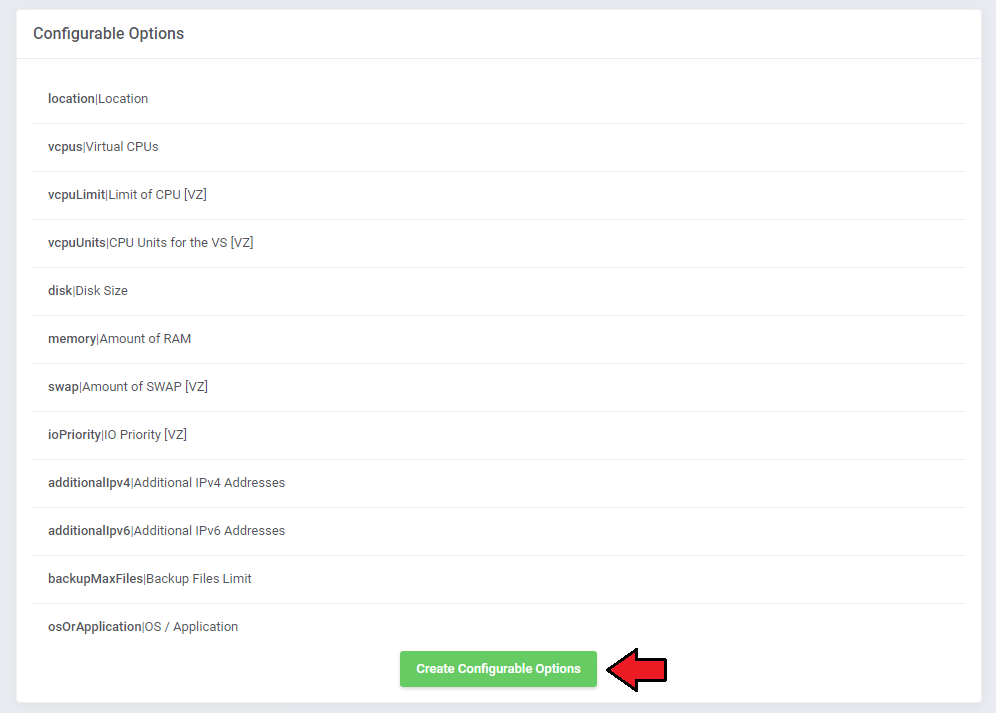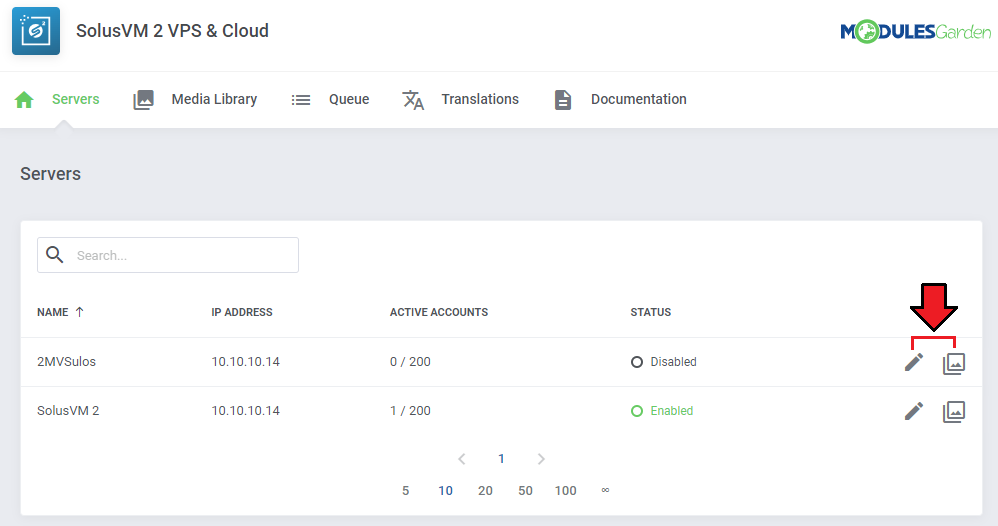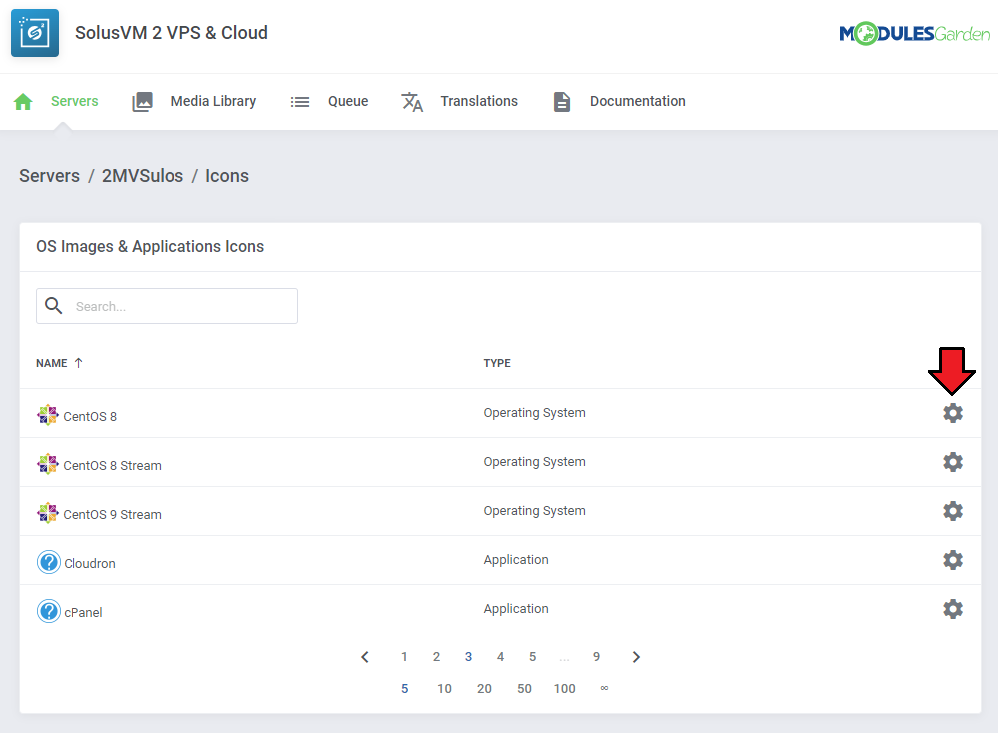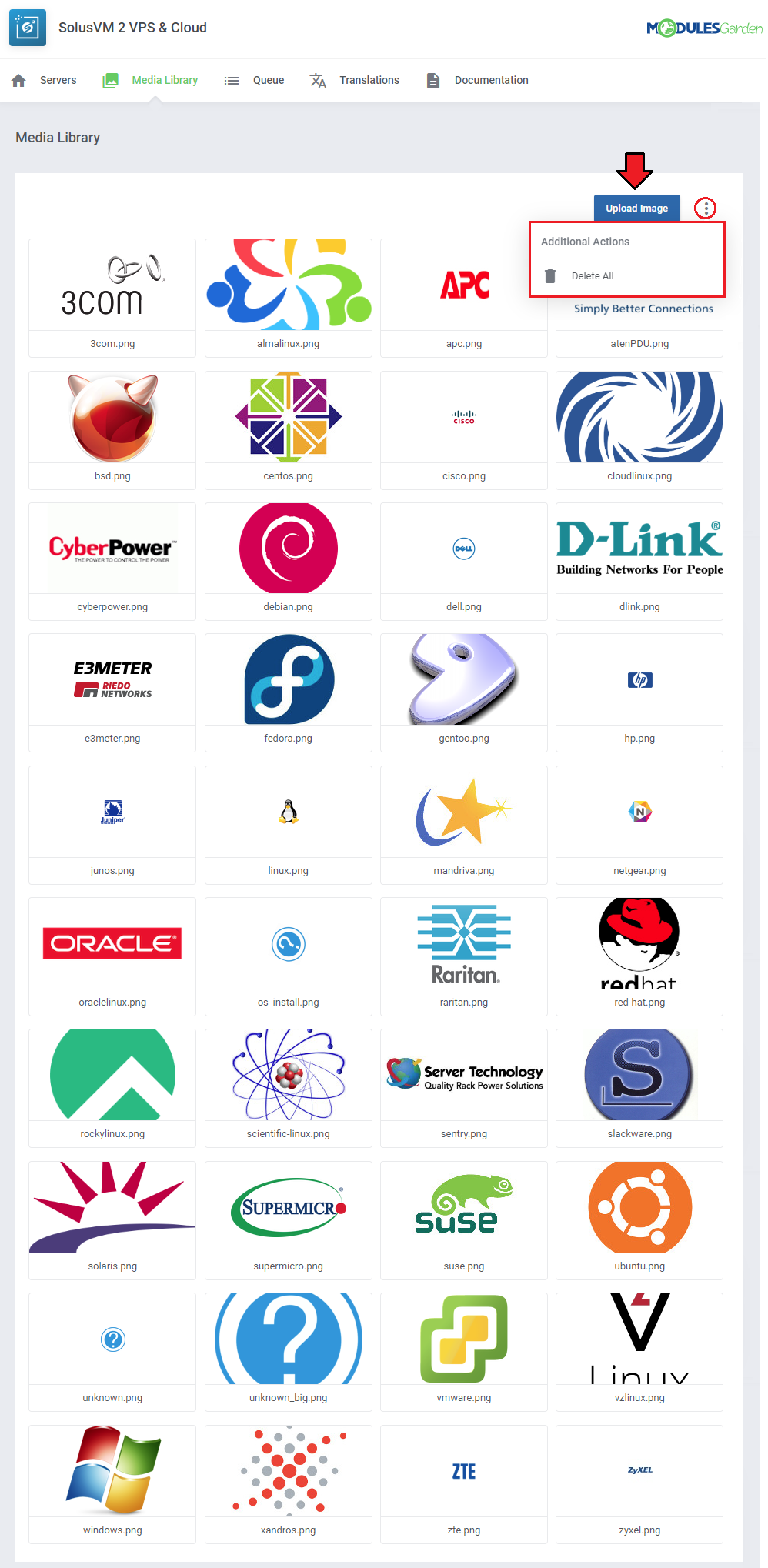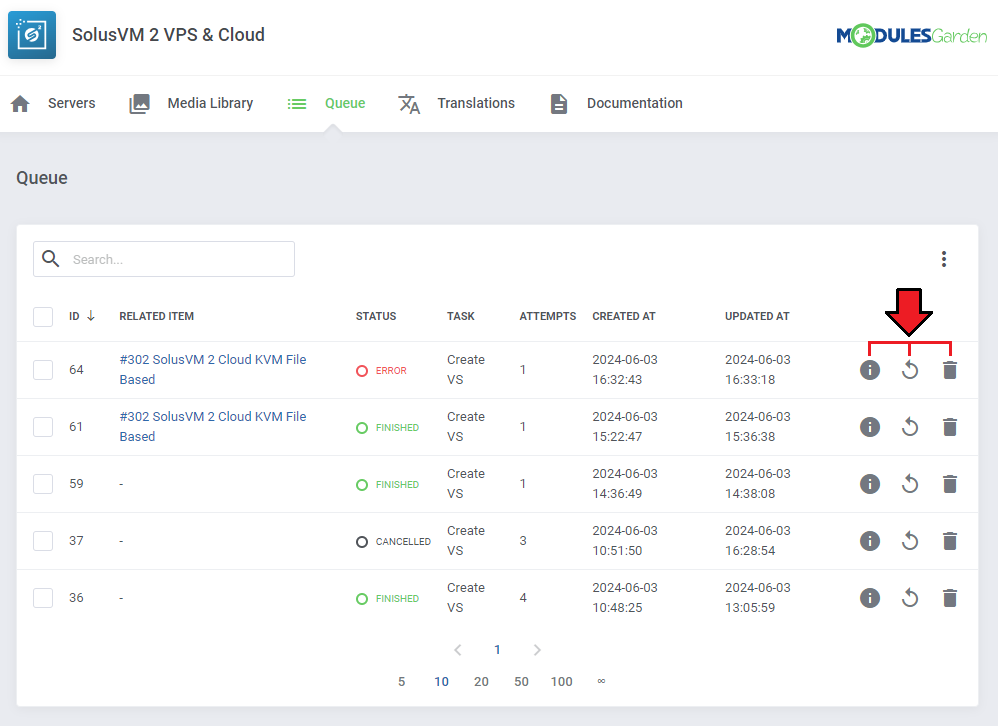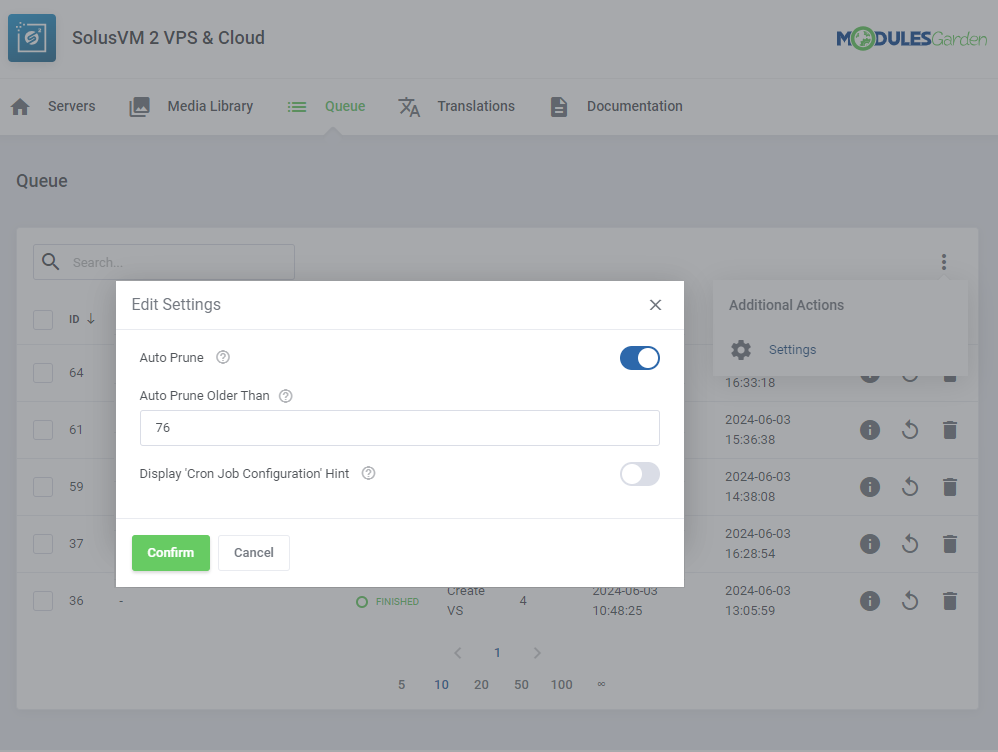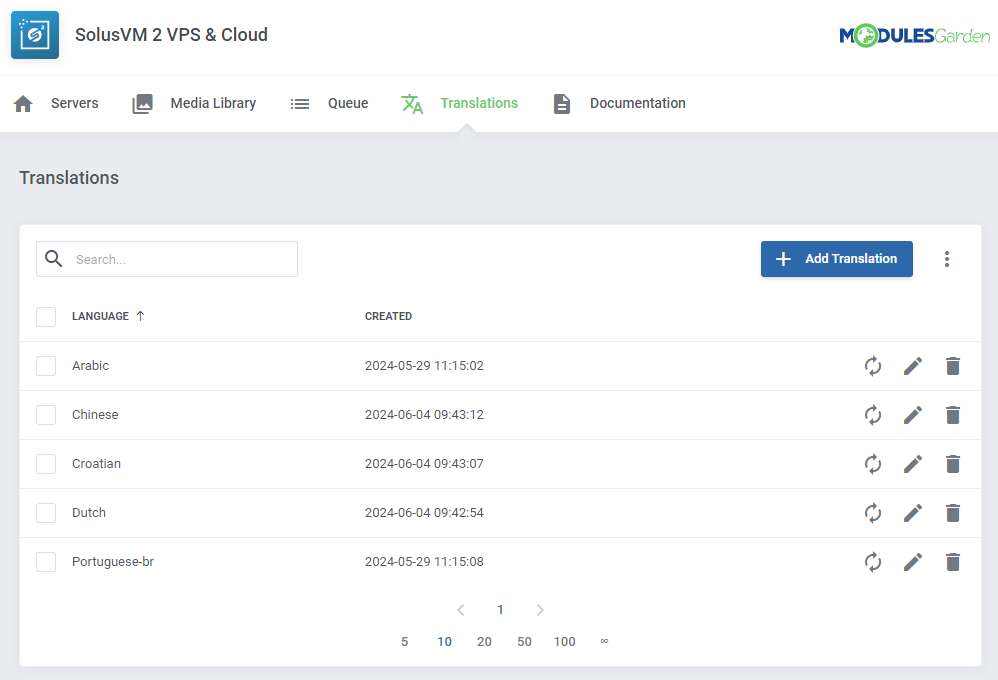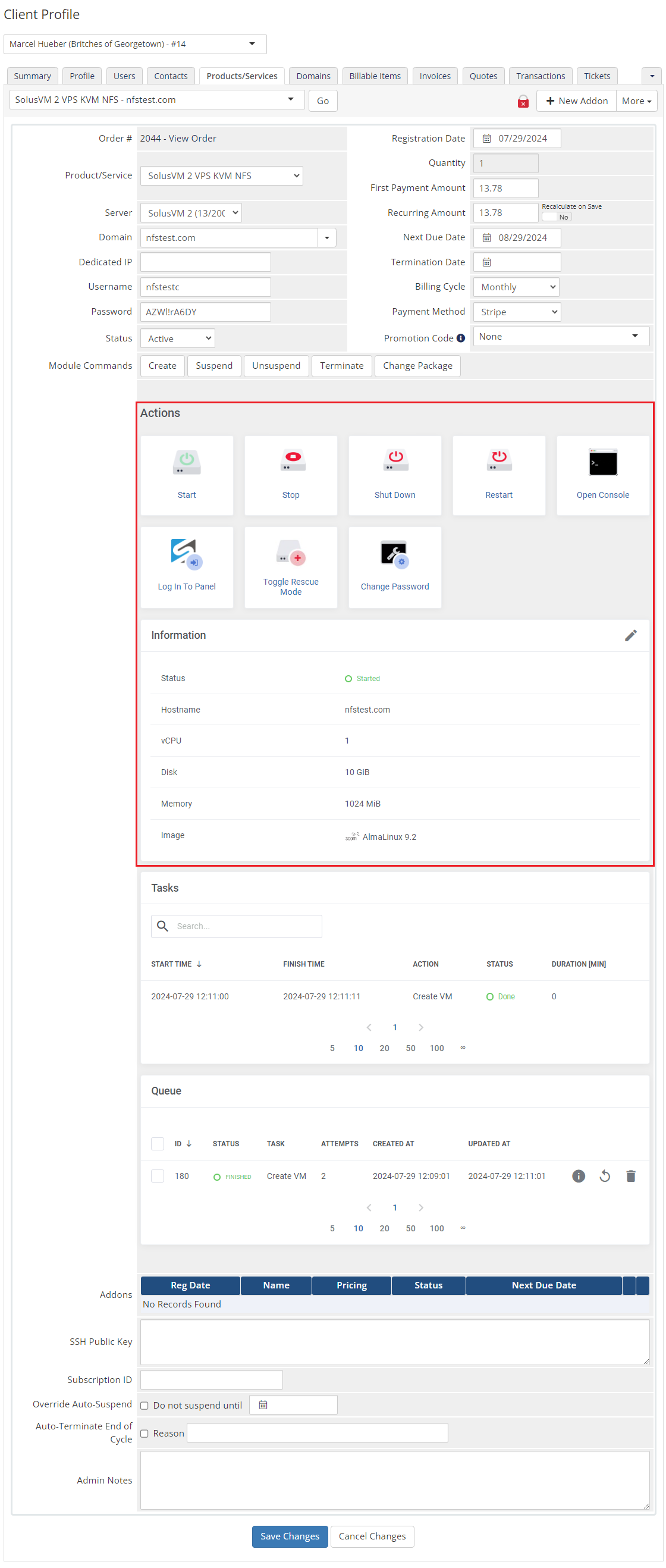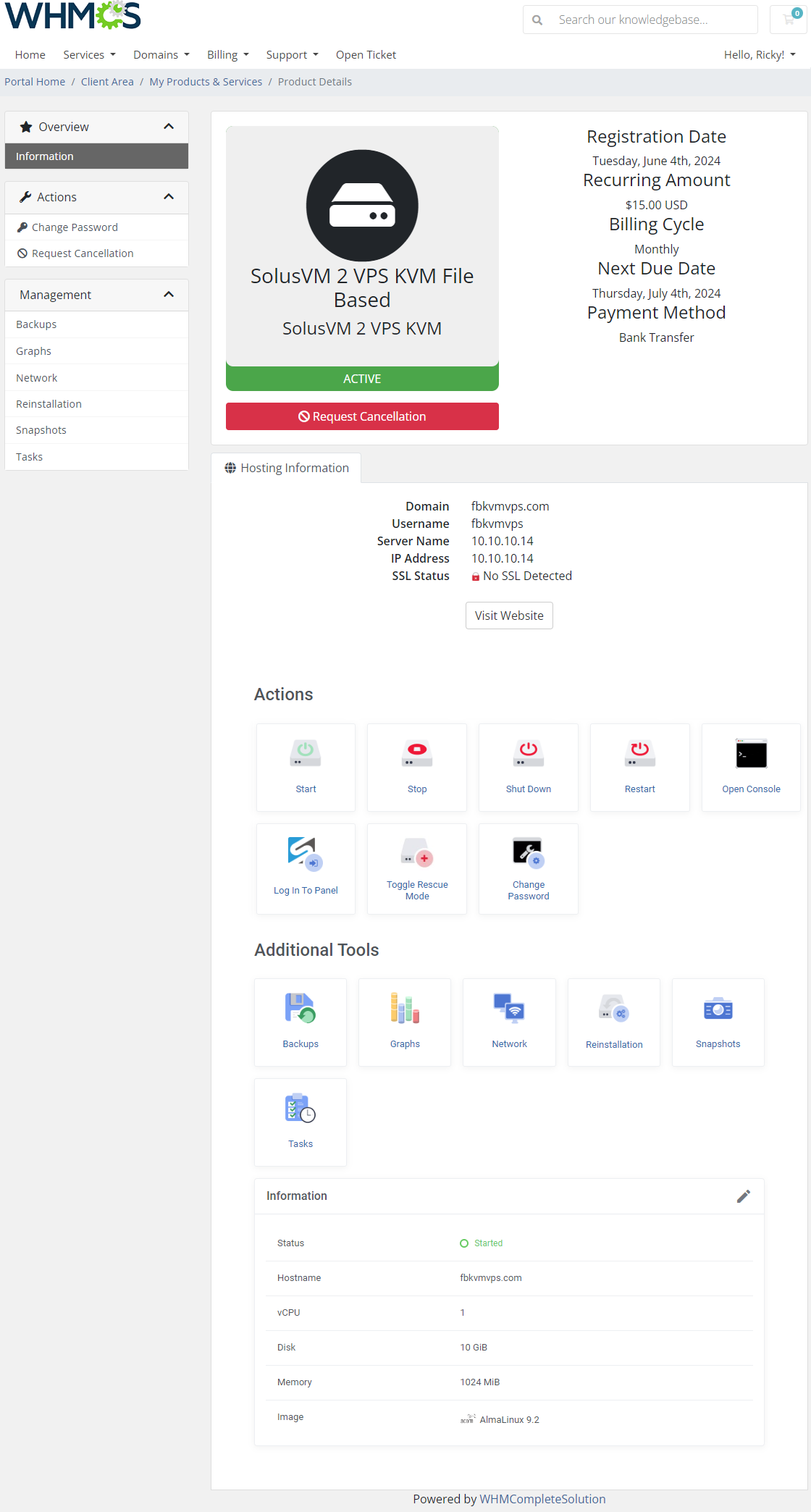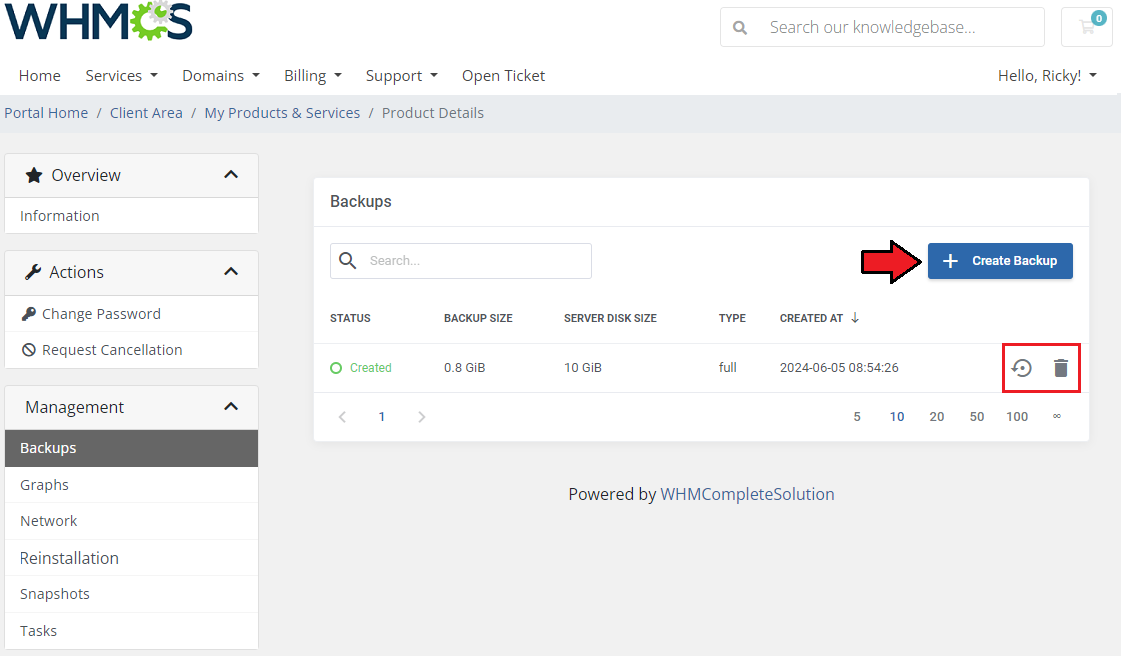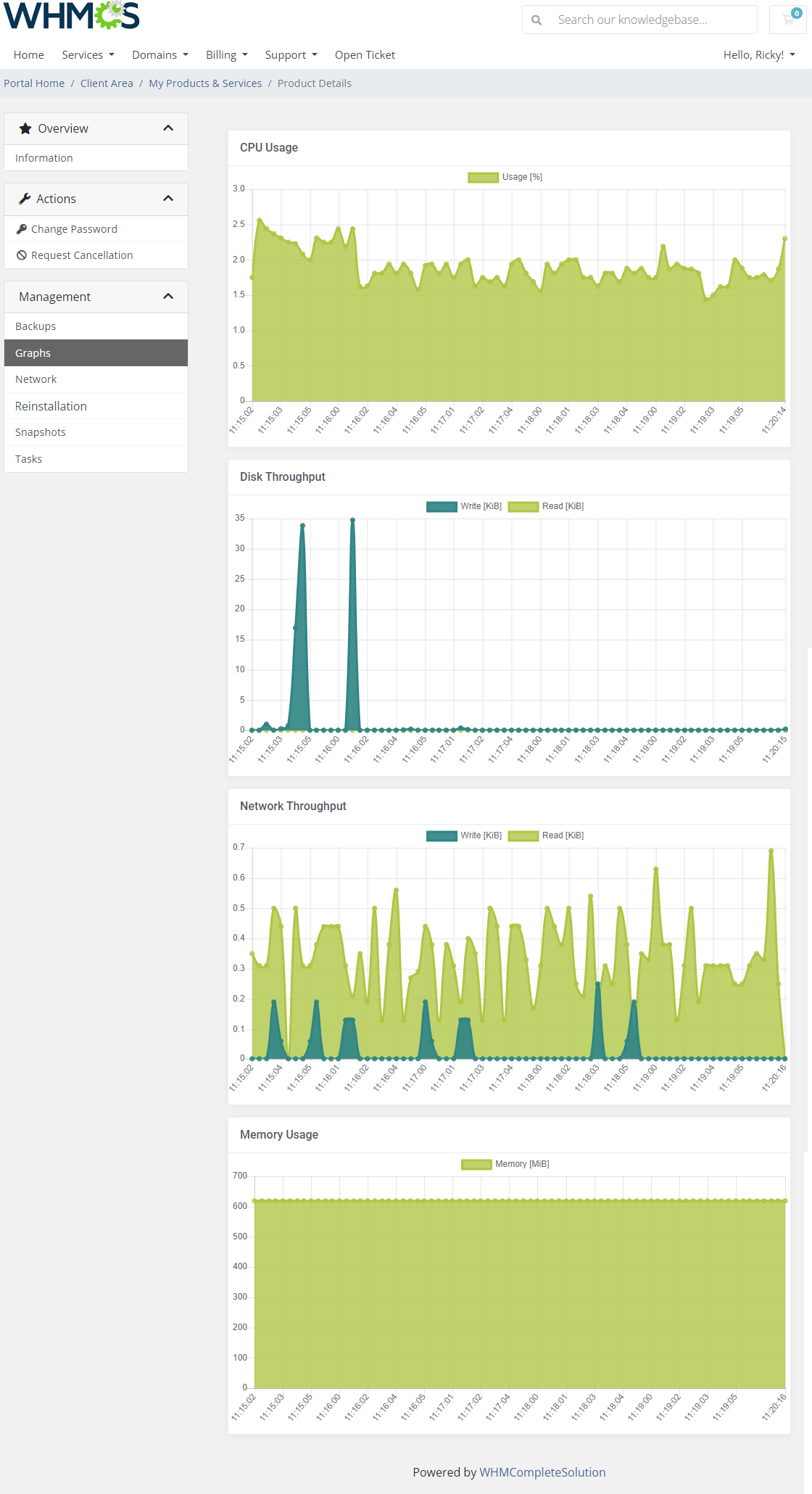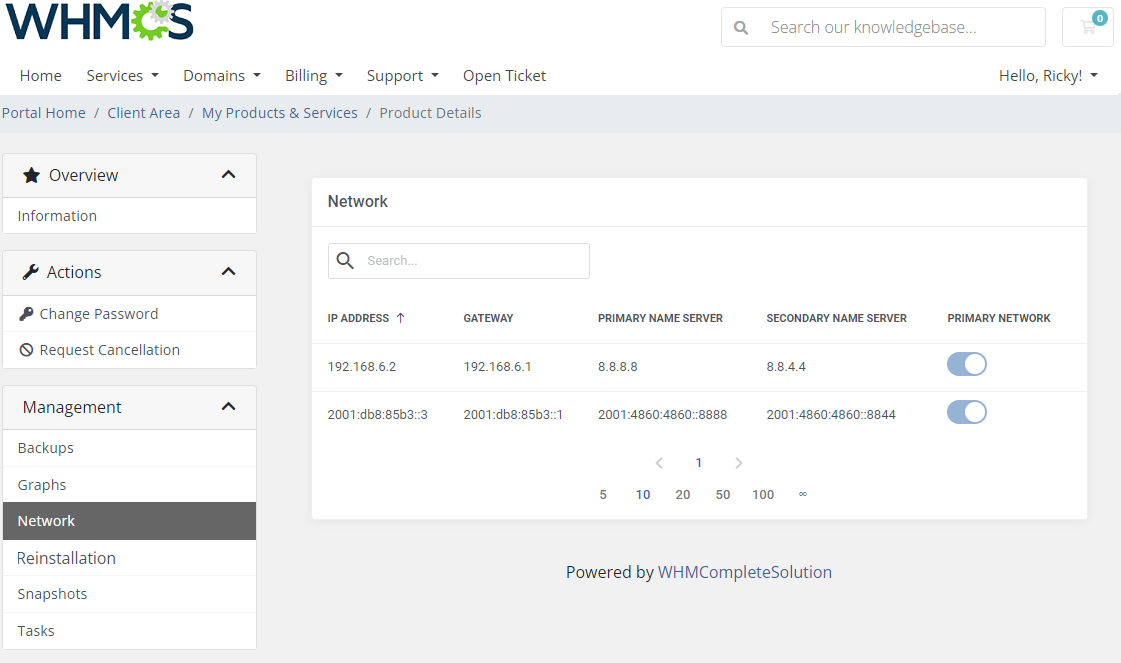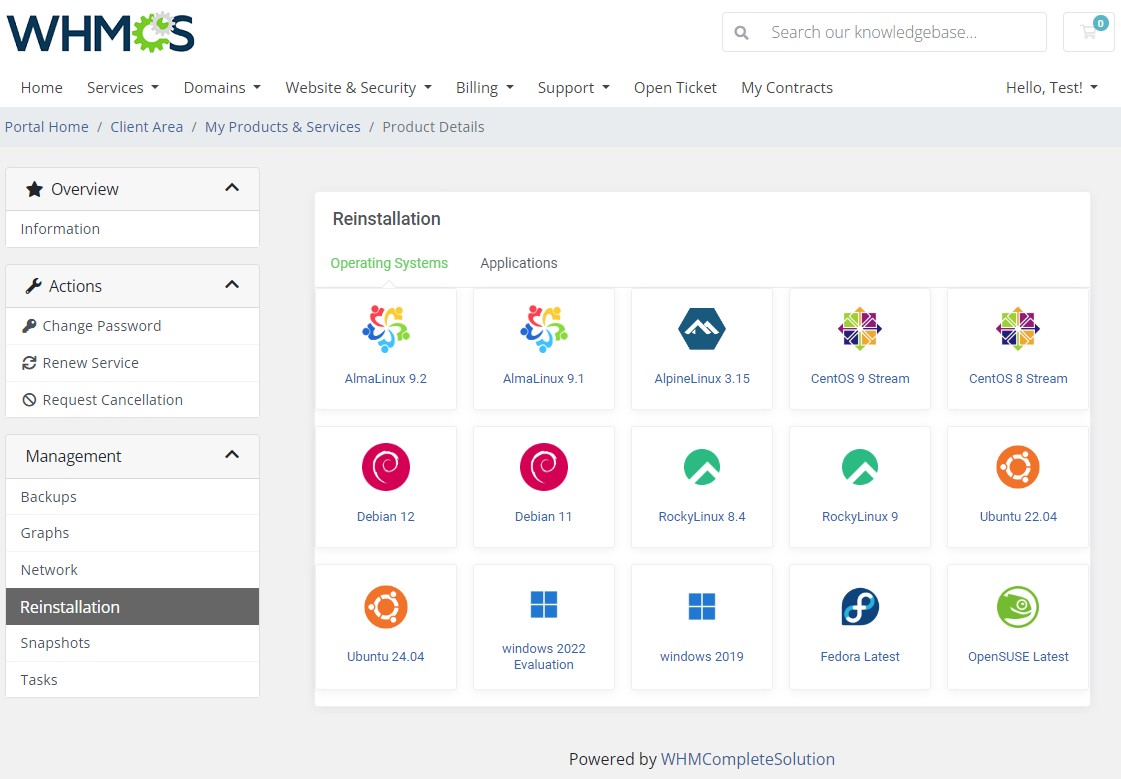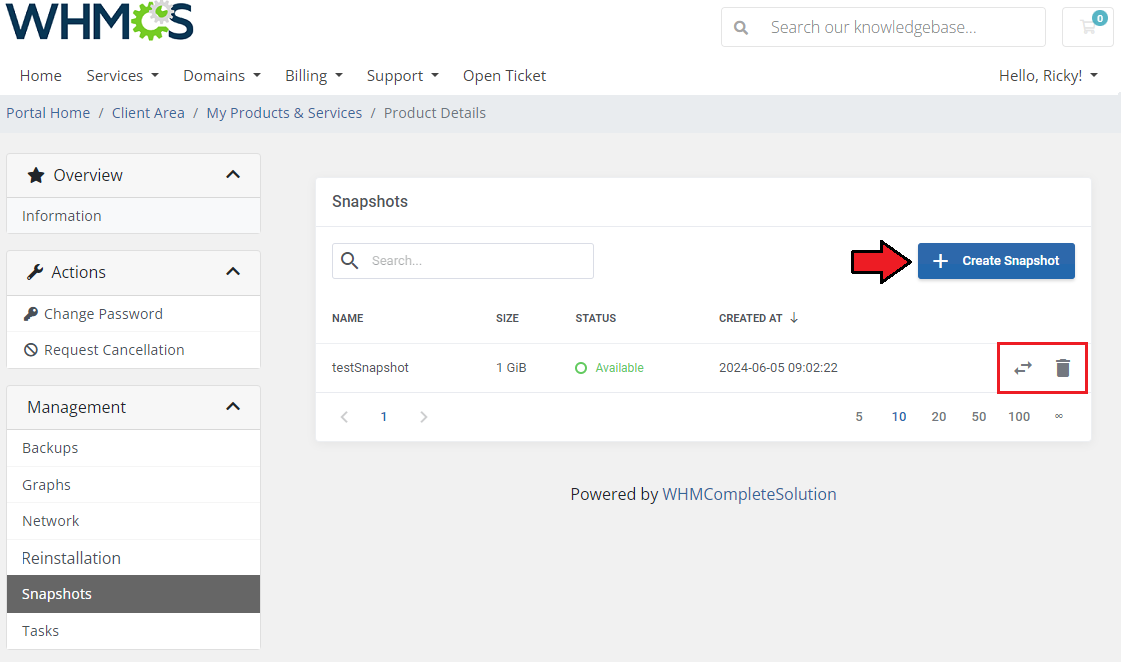23. As the last step add a cron job as shown below (5-minute intervals are recommended).
php -q /your_whmcs/modules/servers/SolusVM2VpsCloud/cron/cron.php queue
This cron makes sure tasks are run automatically when in the queue.
Do not forget to replace 'your_whmcs' with your WHMCS root location. The cron can be also executed every single minute in order to perform the action more often.
You have just finished the installation and configuration of the product, congratulations!
Management
You have just correctly created and customized a new product. Now we will highlight the features of the addon.
Go to 'Addons' → 'SolusVM 2 Vps & Cloud' in your WHMCS.
|
Addon Configuration
Servers
| 'Servers' section contains a list of your configured servers, you may quickly edit them directly from this tab, simply press the edit icon.
|
Click on the 'Details' icon to view a list of images available on the server.
You can change the image associated with each operating system and application by clicking the 'Settings' icon and choosing a picture from the media library.
|
Media Library
The 'Library' section stores images that can be used as thumbnails for your operating system and application images.
Use the Additional Actions to select a directory for the library or to delete all images.
To upload a new image, use the 'Upload Image' button.
|
Queue
In this section, you will find a list of all the tasks issued by the module.
The information on each task includes:
- Task ID
- Related item
- Task status
- Task type
- Attempts taken
- Date of creation
- Date of the last status update
You may also use the action buttons to:
- See task details
- Manually run the task
- Delete the task
Additional actions include the 'Auto Prune' system, which will automatically delete tasks after a predefined number of days.
To find specific tasks use the search and sorting functions.
|
Customizing language files is now extremely easy with the "Translations" tool that is now available directly in the addon.
Its user-friendly design makes managing various language file tweaks a smooth and efficient process.
Prepare translations for the original English files with this handy built-in tool. For specific instructions on how to use this tool please refer to its dedicated article, you will find it here.
|
Logs
The 'Logs' page is where you will find detailed information about the actions the module is performing.
Use the action buttons to see details or delete each log entry. Multiple logs can be deleted at once by utilizing the mass selection function.
|
| Furthermore, the logs feature additional actions. Changing the logs' settings, exporting the logs to a '.csv' file, and a way to delete specific log types.
|
| In the settings you can specify which log types should be recorded, and whether they should be deleted automatically after a specific time.
|
| While exporting you will pick a time frame and the log types to export.
|
| Here you can decide which log types to delete, you can also specify how old the logs have to be to qualify for deletion. Leave the first field empty to delete all logs.
|
Admin Area
VPS
Admins can monitor and manage the virtual machines on the client's page.
The action buttons include:
- Start the machine
- Stop the machine
- Restart the machine
- Access the machine's console interface
- Change the password of the machine
Underneath the information regarding the virtual machine is located, it includes:
- Status of the machine
- Hostname
- vCPUs in use
- Disk space allocated to the machine
- Operating system/application currently used
and import new virtual servers.
All tasks related to the servers are logged in the Tasks table.
|
Cloud
Admins can monitor and manage the servers on the client's page.
The Available Resources graph displays how much of the distributed resources are in use.
The Virtual Server list features details about the client's servers and offers options to:
- Start the server
- Stop the server
- Restart the server
- Delete the server
- Access Console
and import new virtual servers.
All tasks related to the servers are logged in the Tasks table.
|
Client Area - Ordering Proccess
Client Area - VPS
For the VPS products, clients have access to basic actions and information regarding their virtual machine.
The basic actions include:
- Start
- Stop
- Restart
- Console
- Change Password
If enabled, additional tools will also be available to the user.
|
Backups
Users can create and manage backups in the 'Backups' tab.
To create a new backup use the 'Create Backup' button.
Once a backup is created, it can be deleted or used to restore the virtual machine state by clicking the action buttons next to each backup on the list.
|
Graphs
Clients will find visualizations of their current 'CPU Usage', 'Disk Throughput' , 'Network Throughput' and 'Memory Usage'.
By tracking VPS usage sudden and unexpected overloads can be avoided.
|
Network
The network tab contains information regarding the virtual machine's network settings.
- IP Address
- Gateway
- Primary Name Server
- Secondary Name Server
and whether a given network is set as a primary for the virtual machine.
|
Reinstall
The 'Reinstall' tab contains a list of operating systems and applications allowed for virtual machine reinstallation.
Clicking on any of the icons will initiate the reinstallation process, after a confirmation popup.
|
Snapshots
| The 'Snapshot' tab allows the users to create new snapshots and manage their snapshot library.
|
Tasks
The list of tasks related to the client's virtual machine can be found in the 'Tasks' tab.
The list features details such as:
- Task start time
- Task finish time
- Action
- Status
- Duration
|
Client Area - Cloud Type
The client area of cloud products features 'Available Resources' information table and the 'Virtual Servers' list.
The table features a graphical representation of the resource usage of
- vCPUs cores
- Disk limits
- Memory limits
- Additional IPv4 addresses
- Additional IPv6 addresses
Hovering over the question mark icon will display the exact numbers for each metric.
|
New Virtual Server
|
To add a new virtual server, click on the 'Create Virtual Server' button first.
|
Then provide the configuration for the new virtual server.
- Name
- Description
- Password
- vCPUs
- Disk Size
- VS RAM
- Primary IPv4
- Primary IPv6
- Additional IPv4
- Additional IPv6
- Image
The graph on the top of the screen can help you see how many resources remain while you allocate them to the new server.
Click on 'Submit' when ready.
|
| When the process is complete, the new server will be visible and manageable on the list.
|
Tips
1. Since SolusVM 2 panel only allows a small number of special signs to be used in passwords, it might be helpful to disable special characters in auto generated passwords.
To do so, navigate to 'General Settings' → 'Security' → 'Auto Generated Password Format' and select 'Generate passwords containing a combination of letters and numbers only'.
|
Update Instructions
An essential guidance through the process of updating the module is offered here.
Ensure successful completion of the module update by carefully following each step, thereby preventing data loss or any unforeseen issues.
Additionally, you will find a current list of supplementary actions necessary for a smooth update process there.
|
Upgrade Guide
Seeking a solution that offers greater flexibility, customization tailored to your precise needs, and unrestricted availability?
There is an option that not only proves to be cost-effective in the long run but also includes prioritized support services, making it a truly valuable investment.
Opt for the Open Source version of your SolusVM Extended VPS For WHMCS module to unlock these benefits.
Simply click on either the Get Source Code or Upgrade To Lifetime button found on the product's page in our client area to complete the one-step upgrade process, with a dedicated discount already applied.
Follow a comprehensive guide covering the transition process, the advantages it brings, and step-by-step instructions on what to do next after the order has been successfully finalized.
|
Common Problems
| 1. When you have problems with connection, check whether your SELinux or firewall does not block ports.
|
|
